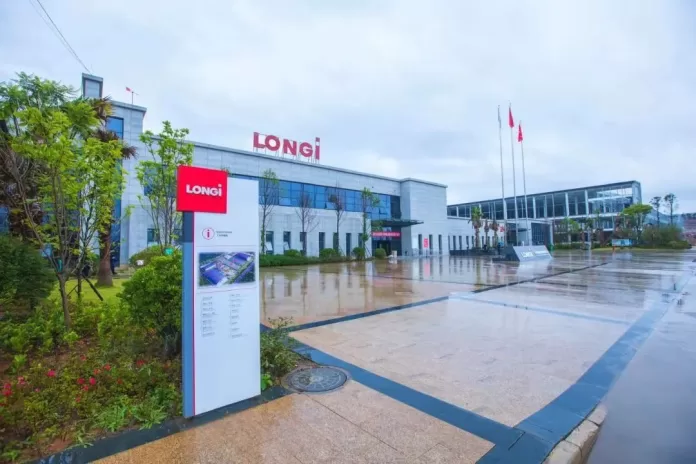During the second part of COP15, Li Zhenguo, founder and president of LONGi, spoke at a side event hosted by the Global Environmental Institute (GEI).
Li Zhenguo spoke through video how business activities and pledges might assist in enhancing biodiversity conservation. He delivered an update on LONGi’s Baoshan manufacturing site in Yunnan Province in southwest China, the pilot plant for LONGi’s transition to net-zero emissions.
LONGi unveiled an ambitious ambition to turn its Baoshan facility in Yunnan into its first “Zero-carbon Plant” by 2023 at the first phase sessions of the UN Biodiversity Conference (COP 15) held in China’s Kunming.
Li stated that the Baoshan factory is one of LONG’s most significant upstream PV production sites. He continued, “We are making solid progress toward delivering our first zero-carbon plant in Baoshan.”
Li stated that LONGi will boost the usage of renewable energy at the Baoshan facility to 100 percent for daily manufacturing and operations, up from 90.91 percent in 2021.
“In order to lower Scope 1 emissions considerably, LONGi is boosting its investments in natural gas recovery technology,” Li noted. According to estimations, LONGi’s first natural gas recovery programme at the Baoshan facility has reduced the company’s annual carbon emissions by more than 90%, from 32,000 metric tonnes of CO2e to 3,200 metric tonnes of CO2e.
Li stated that the Baoshan factory has also implemented a computerised energy management system to increase energy efficiency. In 2021, the unit consumption of PV goods manufactured at the LONGi Baoshan facility will have decreased the carbon footprint by more than 8%. The Baoshan facility of LONGi has completed Scope I and Scope II greenhouse gas accounting and has received certification from China General Certification.
LONGi has constructed a Zero-carbon Park to increase green and low-carbon awareness and encourage staff engagement in environmental protection. In the future, the Baoshan facility will continue to minimise its carbon footprint by tracing its green power consumption, placing PV roofs on industrial buildings, constructing EV charging poles to encourage the use of clean energy, and providing its personnel with improved training on carbon neutrality.
Li stated that LONGi is pioneering the production of net-zero modules while the Baoshan factory seeks to create net-zero wafers by 2023. He added that everyone at LONGi is aware that the journey to net-zero will be lengthy and difficult, but that it is a “shared ambition”.
Li observed that PV technology may provide dependable and inexpensive clean energy, minimise environmental pollution, and aid in ecological restoration, all of which contribute to the conservation of biodiversity. “We want to collaborate with friends and allies to take coordinated action to help establish a net-zero future for our world and protect biodiversity,” he added.
During the conference, LONGi engaged in an in-depth discussion with representatives from World Wide Fund for Nature (WWF), Civil Society Alliance for Biodiversity Conservation (CSABC), African Wildlife Foundation (AWF), Princeton University, and The Nature Conservancy (TNC).
The business also showcased its use of PV modules in the real world for the Aquila Rescue Centre (ARC) and Conservation Centre in Africa. This year, LONGi gave the Aquila Rescue Centre (ARC) and Conservation Centre with a batch of photovoltaic (PV) modules that may primarily be utilised for night illumination and providing clean water for wildlife.
Previously, the centre used diesel engines to generate energy, which not only resulted in significant environmental pollution but also disrupted the nighttime wildlife habitat owing to excessive noise.
In the future, LONGi wants to increase collaboration between different industries and look into how PV technology could help protect biodiversity.





